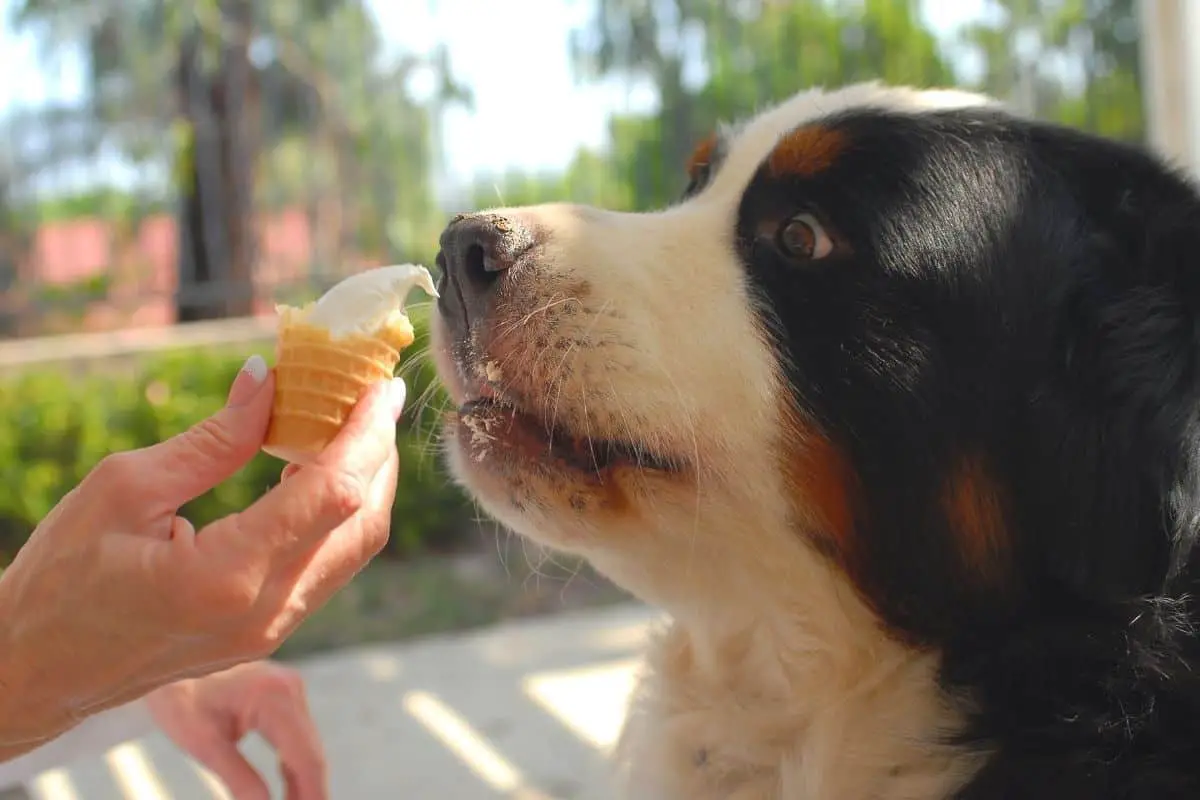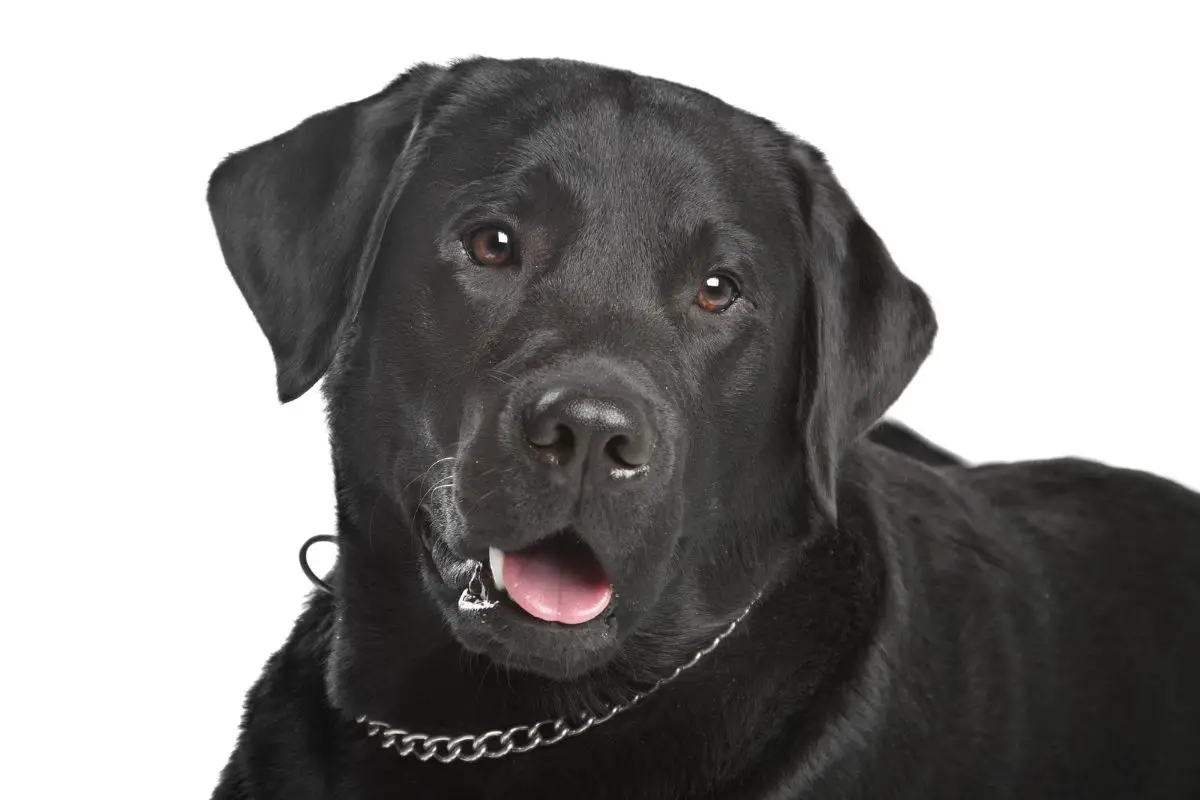This post contains affiliate links.
If you’ve ever wondered if that tasty ice cream treat you’ve given your dog can cause a brain freeze, you’re not alone. Getting a brain freeze is uncomfortable and often preventable, but what about dogs?
Dogs can get brain freeze if they consume something cold too fast. In humans, the pain of a brain freeze is caused by triggering the trigeminal nerve—which dogs also have. Dogs don’t know to consume colder foods slower, so they likely also experience the painful brain freeze sensation.
The rest of this article will discuss what causes a brain freeze, how it affects dogs, how to tell if a dog is experiencing a brain freeze, and what to do to make it more bearable. We’ll also discuss different foods that can cause your dog to get brain freeze and the best way to prevent it.
Table of Contents
What Is a Brain Freeze?
Brain freeze, otherwise known as a cold-stimulus headache, is a sharp pain resulting from consuming cold food or beverages, such as ice cream. Why this happens is still debated; however, it’s believed to occur when the cold hits the roof of your mouth or back of your throat, which changes the temperature, triggering the trigeminal nerve. Your blood vessels constrict, and more blood goes to that area in a rush, which causes a brief, but painful headache.
How Does Brain Freeze Affect My Dog?
It’s hard to tell if brain freezes affect dogs in the same way as they do humans. While many people believe dogs experience brain freezes because they also have a trigeminal nerve, they don’t know the pain level associated with the headache.
The trigeminal nerve in dogs covers the face, eyes, and lower jaw. Therefore, if they drink icy-cold water or have a frozen treat, it’ll stimulate the trigeminal nerve. While brain freezes in humans typically last from 20 seconds to 2 minutes, it’s likely about the same for dogs. However, it’s not known for sure.
How To Tell if My Dog Has a Brain Freeze?
You can look for many signs in your dog to determine if they’re experiencing a brain freeze. While your dog can’t outright tell you their head hurts, their behavior will seem odd and a little worrying.
Brain Freeze Symptoms in Dogs
When dogs get a brain freeze, they’ll likely seem shocked at first. They’ll probably stop eating the cold food or drink (if they haven’t already finished it) and seem to freeze in place for a moment. Other odd behaviors owners have seen from their dogs include:
- Opening and closing the mouth
- Licking the lips and around the mouth area
- Rubbing the head, nose, and mouth on the ground
- Shaking
- Inability to sit still
All dogs will most likely react differently to the shock of a brain freeze. Since dogs don’t eat cold foods as often as humans, they don’t know to eat the food slower than usual to prevent a brain freeze. Therefore, they’ll be confused and seem disoriented for a while.
How To Help My Dog Through a Brain Freeze
Chances are good that you know all the tricks to get through a headache yourself, such as putting your tongue or thumb on the roof of your mouth, immediately drinking warm water, or massaging your temples. However, helping your dog is a whole other issue.
The best way to help your dog get through a brain freeze is to offer warm water to drink and try to massage their head. Your dog might not drink the water, but giving them a head massage might help ease the pain until the brain freeze goes away.
Treats That Can Give My Dog Brain Freeze
Along with ice-cold water, there are many cold treats available for dogs and are great to help dogs cool down on those hot summer days, but unfortunately, they can cause brain freeze if you’re not careful.
- Ice cream treats: Ice cream dog treats are probably the main culprit of brain freeze in dogs. While there are several delicious flavors for your dog, and they’re great as a special treat, your dog won’t know to eat it slowly, so it’ll most likely cause a painful headache.
- Frozen peanut butter treats: Many dog owners love to make their own treats for their dogs, and frozen peanut butter treats are a favorite of dogs everywhere. You can also find this in-store or online, and it’s similar to ice cream for dogs. However, as it’s frozen, eating this treat too quickly can cause your dog to have a cold headache.
- Frozen kong treats: Several kong-type toys sold work as frozen treats and toys. You freeze it with a treat inside, and then give it to your dog. Frozen toys work amazingly for teething puppies; although there’s a slight risk of a brain freeze, it’s not as likely with these types of treats.
- Ice treats: Giving dogs ice as a treat is a common thing among dog owners. Many dogs love the cold and crunchy feeling of ice, even though it doesn’t have any taste. But giving too big or too many ice treats to your dog can cause a brain freeze.
Snow is also a contributor to brain freeze in dogs. If you live in an area where it snows, you might want to keep an eye on your dog to make sure they’re not overeating snow. While it’s usually harmless, it can lower the body temperature and become a more serious issue.
Tips To Prevent Dogs From Having a Brain Freeze
If your dog loves the cold treats you give, there are ways to be cautious and prevent a brain freeze from occurring. These tips will vary depending on the size of your dog, but the idea is the same:
- Give your dog smaller portions. If you’re giving your dog a cold treat, try to break it into smaller pieces and slowly give it to your dog. Doing this will make your dog eat slower, and therefore, decrease the risk of a brain freeze.
- Mix a cold treat with a warm treat. Mixing a cold treat with a warm treat will minimize the coldness of the treat. Therefore, even if your dog eats it quickly, it shouldn’t be cold enough to cause a brain freeze.
Ways To Cool Down Your Dog That Won’t Cause Brain Freeze
Most dogs love summertime, but with their thick coats, they can overheat quickly. If you typically only give your dog cold treats during the hot summer months to cool off, there are other options to try that don’t come with a risk of brain freeze, such as:
- Set up a kiddie pool. Setting up a small kiddie pool with cold water will give your dog something to jump into when it needs to cool off. Just be sure to check that the water stays cool and change it when it starts to become hot.
- Set up a sprinkler. If you don’t have a kiddie pool, consider setting up a sprinkler. Not only will this be good for your yard, but your dog will probably think it’s a fun game, and it will work great as a way to cool off. If you want to get a sprinkler specifically for your dog, we recommend the Bundaloo Dog Sprinkler Pool from Amazon. It’s not too big, but it provides enough space for your dog to have a dedicated play and cool-off area.
- Provide your dog with a shady area. Whether you set up an umbrella or put your dog’s bowl under a shady tree, providing an area away from direct sunlight is essential for your dog and will do wonders for cooling it down.
Should I Take My Dog to the Vet After a Brain Freeze?
Brain freezes are relatively harmless and go away on their own. Usually, there’s no reason to take your dog to the vet. However, if you notice continued strange behavior after your dog had a brain freeze – particularly if your dog has any preexisting medical conditions – you may wish to take it to the vet for a quick check-up.
Final Thoughts
Since dogs have the same nerves that cause brain freezes in humans, it’s believed that they also experience the cold-stimulus headache when they eat cold foods. While there aren’t many studies on this, many people have dogs that show odd behavior after eating cold foods, indicating a brain freeze.
While brain freezes are harmless, we aren’t sure if it affects dogs the same way as humans. Therefore, taking steps to prevent brain freezes in your dog, such as feeding them cold foods slowly or finding other means of cooling them down, is the best thing you can do.
Sources
- Wikipedia: Cold-stimulus headache
- Wikipedia: Trigeminal nerve
- Hackensack Meridian Health: What Causes Brain Freeze?
- K9 Magazine: Can Dogs Get Brain Freeze
- Hill’s Pet: Can Dogs Get Brain Freeze?
Mrdogfood.com is a participant in the Amazon Services LLC Associates Program, an affiliate advertising program designed to provide a means for sites to earn advertising fees by advertising and linking to Amazon.com. We also participate in other affiliate programs which compensate us for referring traffic.





